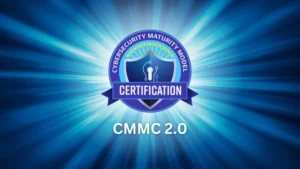1. Malware
Malware is a type of malicious software that is designed to damage or disable computers, steal data, or hijack online accounts. It can come in the form of viruses, Trojans, and spyware.
Viruses are a type of malware that can spread from one computer to another. Other types of malware can enter your systems through email attachments, infected websites, or other means.
Cybercriminals use malware to disable systems, and even delete data. It can also be used to track a person’s online activities, or even take over a computer’s resources for cryptocurrency mining.
Malware is a catch-all term for malicious software. It is a common security threat for businesses.
It can infect a business’s system and wreak havoc by causing data loss, data breaches, performance issues, and even system crashes.
While many businesses have anti-virus and anti-malware software installed on their computers, it should always be updated to protect against the latest strains of viruses and malware.
2. Phishing
Phishing is a type of online fraud that attempts to steal personal information such as login credentials or credit card numbers by masquerading as a trustworthy entity.
Cybercriminals use fake emails or websites that look like they’re from a legitimate company or organization but are actually from a malicious third party.
The email will often ask the recipient to click on a link or open an attachment, which can then lead to the installation of malware or the theft of sensitive data. This result in identity theft and financial losses.
Phishing scams are becoming more common as attackers become more sophisticated. Businesses need to be aware of this scam and train their employees on how to spot and avoid them.
3. Ransomware
Ransomware is a type of malware that encrypts a victim’s files or a business’s data. The attacker holds the data hostage and then demands a ransom to decrypt it.
Cybercriminals can encrypt your files and make them unusable, preventing you from accessing your data.
This can be a very costly attack for businesses, as it not only can lead to the loss of important data but also downtime while the ransom is being paid.
To be protected against ransomware, businesses should ensure that they have backups of their data and that the latest version of security software is installed.
4. DoS Attacks
Denial-of-Service (DoS) attack is a type of cyber attack that floods the target networks with spoofed packets which causes the target system to be overloaded and stop functioning.
As a result, legitimate users cannot access the system or service.
DoS attacks are becoming more common and more powerful. These attacks can shut down a website or online service and take down its servers for hours or days, which disrupts business operations.
This causes significant financial losses and damage to a company’s reputation.
Businesses need to be prepared for these attacks and have a plan in place to keep their operations running in the event of an attack.
They must ensure that their network has enough capacity to handle spikes in traffic and that security measures are in place.
5. SQL Injection
SQL injection is a type of attack that allows an attacker to execute malicious SQL code to gain access to sensitive data stored in a database or even take control of the entire system.
This type of attack takes advantage of vulnerabilities in web-based applications to inject malicious code into the database.
The code can be inserted through user input, such as when a user fills out a form on a website. Once the code is in the database, it can be used to view, change, or delete data.
Cybercriminals use this to steal customer information, financial data, or other confidential information. This can result in data loss or corruption, as well as unauthorized access to the system.
Many businesses are not aware of this type of attack and do not have the proper security measures in place to prevent it. Small businesses are also particularly vulnerable to SQL injection attacks.
SQL injection is a major security threat and businesses should take steps to protect themselves.
Some steps that businesses can take include: ensuring that all user input is validated, using parameterized queries, and implementing a whitelist.
Mitigate Computer Security Threats
While no one can completely protect their business from these threats, some steps can be taken to cut the risk.
One of the best ways to do this is to invest in a comprehensive security solution.
This includes having a strong antivirus and anti-malware program, keeping all software up to date, and having a secure firewall. Look here for more information.
Businesses need to have strong security measures, such as intrusion detection/prevention systems, strong passwords, data encryption, two-factor authentication, and other robust authentication protocols.
Aside from implementing security controls, it is also crucial to have incident response plans in place.
They also need to teach their employees how to recognize and avoid these threats, and what to do if they suspect their computer has been compromised.
These safety precautions can help businesses keep their computers and data safe and reduce the risk of becoming a victim of cybercrime.
Protect Your Business From Cybersecurity Threats
As businesses move towards remote work and digital operation, you must be aware of the common computer security threats you will face in 2022.
By taking steps to secure their data on these threats, you can protect your business from the damaging consequences of these attacks.
If you enjoyed this article and would like to read more like it, check out the rest of our blog!





